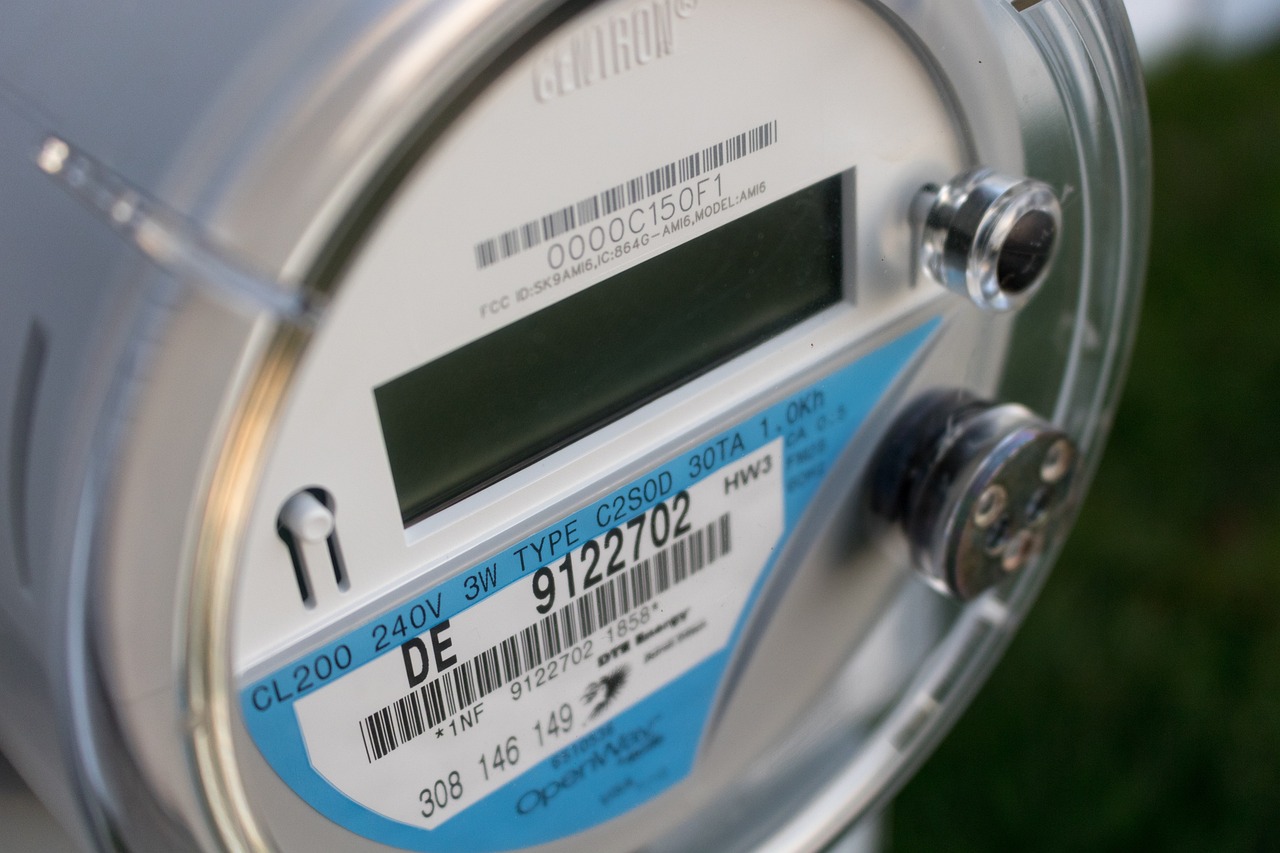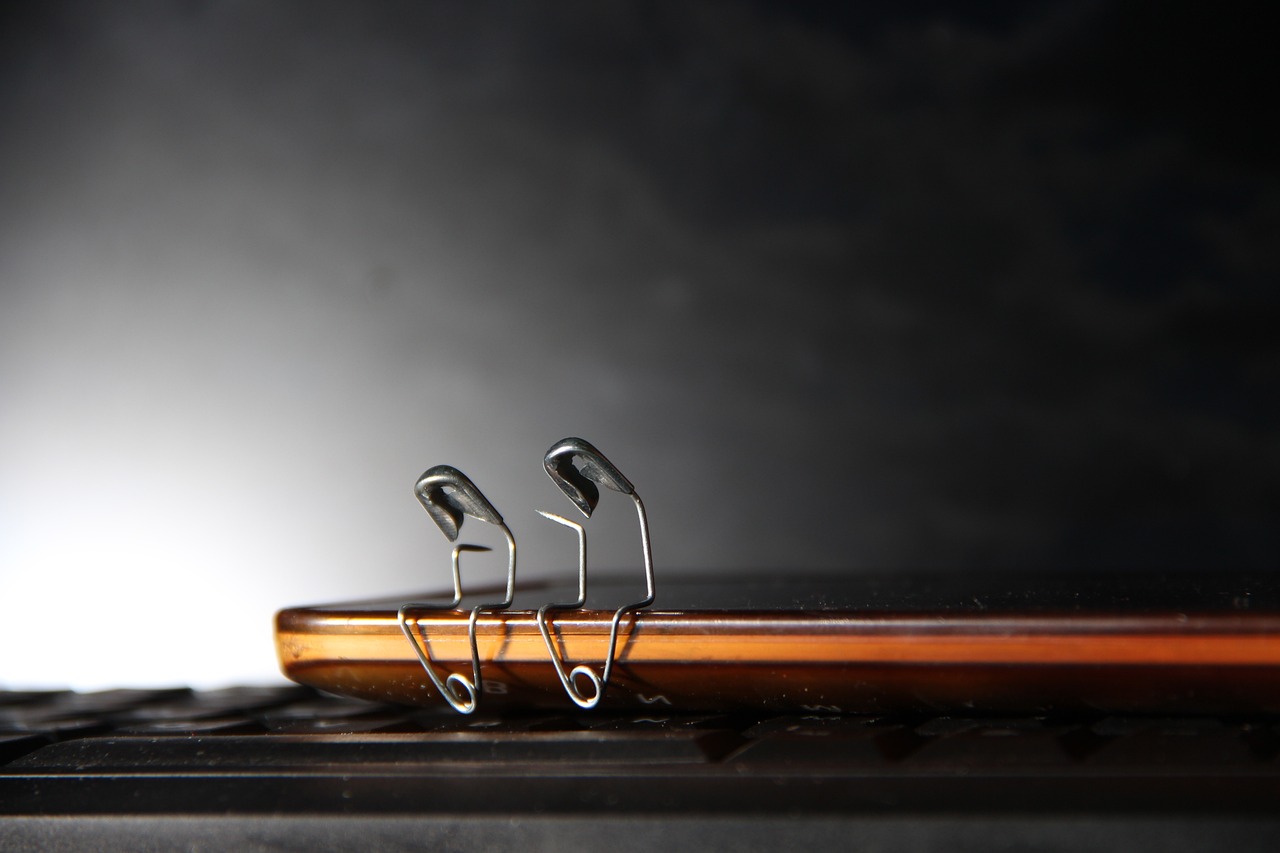What to Check Before Buying a New House for Safety
Purchasing a new home is one of the most significant decisions you'll ever make, not just financially but also for your peace of mind. It's like embarking on a new adventure, and just like any adventure, you need to prepare adequately. Imagine moving into your dream house, only to discover that the neighborhood is unsafe or that the roof is about to cave in. Yikes! To avoid such nightmares, there are essential safety checks you must consider before signing on the dotted line. This article will guide you through the crucial aspects to evaluate, ensuring that your new home is not only a beautiful space but also a secure sanctuary for you and your family.
First things first, let’s talk about the neighborhood. The location of your potential new home can make or break your living experience. You wouldn’t want to live in a place where you feel uneasy every time you step outside, right? Start by researching the crime rates in the area. Websites like local police department reports or neighborhood watch groups can provide valuable insights. Additionally, consider the presence of local amenities such as parks, schools, and grocery stores, which can enhance your quality of life. A community that is engaged and active is often a safer one. So, take a stroll around the neighborhood at different times of the day to get a feel for the area. Are the streets well-lit? Are there families out and about? These observations can give you a better sense of whether the location is conducive to a safe lifestyle.
Next up, let’s dive into the home’s structure. This is where you want to roll up your sleeves and get a bit hands-on. A house might look charming on the outside, but what about its bones? Look for signs of damage, wear, or instability that could pose safety risks. For instance, foundation issues can lead to serious problems down the line. Cracks in the walls or uneven floors could indicate that the foundation is settling improperly. You definitely don't want to be living in a house that feels like it’s about to tip over!
A thorough foundation assessment is crucial for your home’s safety. Check for cracks, settling, or water damage that may compromise the home's integrity. If you notice any significant cracks, it might be worth calling in a professional to assess the situation further. Remember, the foundation is the bedrock of your home—literally!
Proper water drainage is essential for a safe home. Ensure that gutters and downspouts direct water away from the foundation to prevent flooding and structural damage. Standing water around your home can lead to mold growth and other serious issues. A well-maintained drainage system is like a good umbrella—keeping you dry and protected!
Understanding the soil stability around the home can prevent future issues. Investigate soil composition and erosion risks that may affect the foundation’s integrity. If the soil is too loose or prone to erosion, it could lead to significant problems for your foundation. Think of it as the ground’s way of telling you, “Hey, I need some support here!”
The roof is your home's first line of defense against the elements. Assess its condition to avoid leaks and water damage that can lead to safety hazards. A roof in poor condition can quickly turn your cozy home into a water-damaged nightmare. Look for missing shingles, sagging areas, or any signs of wear and tear that could indicate it needs repairs or replacement. Remember, a solid roof is like a sturdy hat; it keeps you safe from the storm!
Now, let’s switch gears and talk about the electrical systems. A thorough inspection of the electrical systems is necessary because outdated or faulty wiring can pose fire risks. Imagine flicking a switch and nothing happens—or worse, a spark flies out! Make sure to ensure everything meets safety standards. You may want to hire a licensed electrician to evaluate the home’s wiring.
Inspecting the wiring can prevent electrical hazards. Look for frayed wires, outdated systems, and ensure that the electrical panel is up to code for safety. If you’re not sure what to look for, consider bringing along a knowledgeable friend or family member who can help you spot potential issues.
Proper grounding systems are crucial for electrical safety. Ensure that the home has adequate grounding to prevent electrical shocks and equipment damage. This is like having a safety net—essential for protecting your family from unexpected electrical mishaps.
Finally, evaluating fire safety measures is critical. Check for smoke detectors, fire extinguishers, and escape routes to ensure the home is prepared for emergencies. Having a plan in place can mean the difference between a close call and a tragedy.
Smoke detectors are essential for early fire detection. Verify their presence and functionality to enhance the home’s fire safety. It’s a good idea to test them regularly and replace batteries as needed—think of it as your home’s early warning system!
Having accessible fire extinguishers is vital. Ensure they are placed strategically throughout the home and are regularly maintained for effectiveness. A fire extinguisher is like a superhero in your home—ready to swoop in and save the day when things get too hot to handle!
- What are the most important safety checks before buying a house?
Location safety, structural integrity, electrical systems, and fire safety measures are key areas to evaluate. - How can I assess the safety of a neighborhood?
Research crime rates, visit at different times, and talk to local residents. - Should I hire professionals for inspections?
Yes, hiring professionals for structural and electrical inspections can provide peace of mind and identify issues you might miss.

Location Safety
When it comes to buying a new home, one of the most important factors to consider is . After all, no one wants to invest in a property only to find out that the neighborhood is rife with crime or has a lack of community engagement. It's essential to do your homework and evaluate the safety of the area before making such a significant commitment. So, how do you go about this? Well, let’s break it down.
First and foremost, research the crime rates in the neighborhood. Many local police departments publish crime statistics that can give you a clear picture of the safety levels. Websites like NeighborhoodScout or local crime mapping services provide detailed reports on the types of crimes that occur in specific areas. Pay attention to trends over time—if crime rates are increasing, that could be a red flag.
Next, consider the local amenities available in the neighborhood. A community with parks, schools, and grocery stores not only enhances your quality of life but also indicates a stable and engaged population. Check if there are community centers or active neighborhood watch programs, as these are signs of a community that cares about safety. A well-maintained area often reflects a supportive community that looks out for one another.
Another aspect to evaluate is the community engagement. Are there local events, farmer's markets, or neighborhood meetings? A vibrant community can often deter crime simply by fostering relationships among residents. You might want to visit the area at different times of the day and week to get a feel for the neighborhood. Is it lively and welcoming, or does it feel deserted and neglected? This can be a telling sign of the area’s overall safety.
Finally, don’t hesitate to talk to potential neighbors. They can provide first-hand insights about the area and its safety. Ask them about their experiences living there, any concerns they might have, and how they feel about the community. Sometimes, the best information comes from those who live there.
In summary, evaluating location safety is a multi-faceted process that requires research, community interaction, and a keen eye for detail. By taking the time to assess crime rates, local amenities, and community engagement, you can make an informed decision that ensures a secure living environment for you and your family.

Structural Integrity
When it comes to buying a new home, is not just a technical term; it’s the very foundation of your safety and comfort. Imagine living in a house that feels like it's constantly swaying in the wind or worse, one that could crumble at any moment. That’s why inspecting the home’s structure should be at the top of your checklist. You want to ensure that the walls, roof, and foundation are all solid and reliable. After all, what’s the point of a beautiful home if it’s a ticking time bomb waiting to collapse?
During your visit, keep an eye out for any visible signs of damage. Cracks in the walls can be more than just cosmetic issues; they can indicate serious underlying problems. A small crack might not seem like a big deal, but if it’s growing, it could mean that the foundation is settling unevenly. Similarly, doors and windows that stick or don’t close properly can hint at structural shifts that could lead to bigger issues down the line. It's a bit like a warning sign on a car dashboard; ignoring it could lead to a complete breakdown.
A thorough foundation assessment can reveal potential hazards that might not be immediately obvious. You should look for:
- Cracks: Horizontal cracks are particularly concerning, as they may indicate significant structural issues.
- Settling: If you notice uneven floors or gaps between the walls and floors, it could be a sign that the foundation is settling.
- Water Damage: Signs of moisture or mold can indicate that water is penetrating the foundation, compromising its integrity.
Addressing these issues early can save you a fortune in repair costs and ensure a safer living environment for you and your family.
Proper water drainage is essential for maintaining the integrity of your home’s structure. You need to ensure that gutters and downspouts are in good condition and directing water away from the foundation. Otherwise, you could find yourself dealing with flooding, which can lead to serious structural damage. Think of it as a moat around a castle; if the moat overflows, the castle is at risk of being washed away. Make sure the drainage systems are functioning properly, as they play a crucial role in protecting your investment.
Understanding the soil stability around your potential new home is equally important. The soil composition and the risk of erosion can greatly affect your foundation’s integrity. For instance, clay soils can expand and contract significantly with moisture changes, putting pressure on your foundation. Investigating the area’s soil type and any history of erosion can help you gauge the long-term viability of your home’s foundation. It’s like building a sandcastle on the beach; if the tide comes in, your masterpiece is doomed!
The roof is your home's first line of defense against the elements, and assessing its condition is vital. A well-maintained roof not only protects you from rain and snow but also prevents leaks that can lead to mold and structural damage. Look for missing shingles, sagging areas, or signs of water damage in the attic. If the roof looks like it’s seen better days, you might want to factor in the cost of repairs or replacement into your budget. After all, a sturdy roof over your head is a key ingredient to a safe and comfortable home.

Foundation Assessment
When it comes to buying a new home, the foundation is more than just a physical base; it's the very bedrock of your investment. A solid foundation not only supports the structure but also ensures the safety and longevity of your home. So, how do you assess whether a foundation is strong and stable? It’s crucial to look for various signs that could indicate potential issues. For instance, cracks in the walls or floors can be telltale signs of underlying problems. These cracks might be small and harmless, or they could be a warning of significant structural damage lurking beneath the surface.
Additionally, you should check for any signs of settling. If you notice that doors and windows are sticking or that there are gaps between the walls and the ceiling, these could indicate that the foundation is shifting. Water damage is another critical factor to consider. Look for water stains on walls or ceilings, especially in the basement or crawl space. Such stains can signify that water is seeping in, which can lead to mold growth and further structural deterioration.
To make your assessment easier, consider creating a foundation checklist. Here’s a simple table to help you keep track of what to look for:
| Signs to Look For | What They May Indicate |
|---|---|
| Cracks in walls or floors | Potential structural damage |
| Sticking doors and windows | Foundation settling |
| Water stains or dampness | Water intrusion issues |
| Uneven floors | Foundation shifting |
Understanding the soil stability around your home is also vital. The type of soil can greatly affect the foundation's integrity. For example, clay soils tend to expand and contract with moisture levels, which can lead to foundation movement. On the other hand, sandy soils may erode more quickly, posing a risk to stability as well. It’s a good idea to consult with a geotechnical engineer if you have concerns about the soil composition in your prospective neighborhood.
Lastly, a thorough foundation assessment isn’t just about spotting problems; it’s also about taking preventive measures. If you identify any issues during your inspection, it’s wise to consult a professional. They can provide a detailed evaluation and recommend appropriate solutions, ensuring that your new home is not only beautiful but also safe and secure for you and your family.
- What are the signs of a failing foundation? Look for cracks in walls, sticking doors, uneven floors, and water damage.
- How can I assess the soil stability? Consult a geotechnical engineer for a detailed analysis of the soil composition.
- Should I hire a professional for foundation inspections? Yes, a professional can provide a thorough evaluation and recommend necessary repairs.

Water Drainage
When it comes to ensuring a safe and secure home, is often an overlooked aspect that can lead to significant problems if not properly addressed. Imagine your home as a fortress; if the moat that surrounds it is not functioning correctly, it can easily become a liability rather than a protective barrier. Proper water drainage systems are essential for directing rainwater away from your foundation, thereby preventing potential flooding and structural damage. Neglecting this vital aspect could lead to a cascade of issues, from mold growth to compromised structural integrity.
First and foremost, you should examine the gutters and downspouts. These components are your home's first line of defense against water accumulation. Make sure they are not clogged with leaves or debris, as this can cause water to overflow and pool around your foundation. If you notice any sagging or misaligned sections, it’s crucial to address these issues promptly. A well-maintained gutter system should effectively channel water away from the house, ideally discharging it at least six feet away from the foundation.
Another critical factor to consider is the grading of your yard. The land surrounding your home should slope away from the foundation to facilitate proper water runoff. If you find that the grading is flat or even sloping towards your home, you may need to invest in landscaping adjustments. This could involve adding soil to create a slope or installing drainage trenches to redirect water flow. It's like creating a channel for a river; if the river flows toward your house, you're bound to encounter flooding issues.
Lastly, don't forget about drainage systems such as French drains or sump pumps, especially if you live in an area prone to heavy rainfall. These systems can be lifesavers, effectively managing water that accumulates around your property. A French drain, for instance, consists of a trench filled with gravel or rock that redirects surface water away from your home. Meanwhile, a sump pump can help remove water that does make its way into your basement, keeping it dry and safe.
In summary, ensuring proper water drainage is not just about aesthetics; it's about safeguarding your investment and your family's health. By taking the time to inspect and maintain your drainage systems, you can prevent costly repairs and create a secure living environment. Remember, a little attention to detail today can save you from a deluge of problems tomorrow!
- What are the signs of poor water drainage? Look for water pooling around your foundation, damp spots in the basement, or mold growth.
- How often should I clean my gutters? It's recommended to clean your gutters at least twice a year, preferably in the spring and fall.
- Can landscaping affect water drainage? Absolutely! Proper grading and the right plants can help direct water away from your home.
- What should I do if I find water in my basement? First, identify the source of the water and address any drainage issues. Then, consider using a sump pump to remove the water and prevent future occurrences.

Soil Stability
When it comes to ensuring the safety of your future home, is a factor that often gets overlooked. Think of the soil as the foundation of a house of cards; if the base isn't solid, everything above it is at risk of collapsing. Before you sign on the dotted line, it's crucial to investigate the soil composition and its stability around the property. This will not only help you avoid potential structural issues down the line but also provide peace of mind that your home is built on a solid ground.
First off, consider the soil composition. Different types of soil behave differently under pressure and moisture. For example, clay soil can expand when wet and shrink when dry, which can lead to significant movement in the foundation. On the other hand, sandy soil tends to drain well but may not provide the same support as clay. It's essential to know what you're dealing with. You might want to consult a geotechnical engineer who can conduct a soil test and provide insights into how well the ground can support your new home.
Next, pay attention to erosion risks. If the property is located on a slope or near a body of water, erosion can be a significant concern. Heavy rains or flooding can wash away the soil, leading to instability. Look for signs of erosion, such as exposed roots or uneven ground. Additionally, you can check local records or speak with neighbors to understand if there have been past issues with soil erosion in the area.
Lastly, don’t forget to consider the drainage systems in place. Proper drainage can prevent water from pooling around your foundation, which is a common cause of soil instability. Make sure that gutters and downspouts are directing water away from the house, and check for any signs of water pooling in the yard. A well-drained property not only ensures the longevity of your home but also keeps your family safe from potential flooding hazards.
In summary, understanding soil stability is a critical step in the home-buying process. By assessing the soil composition, checking for erosion risks, and ensuring proper drainage, you can make a more informed decision that protects your investment and your loved ones. Remember, a secure home starts from the ground up!
- What is soil stability? Soil stability refers to the ability of soil to maintain its structure and support weight without shifting or eroding.
- Why is soil stability important when buying a house? It ensures that the foundation of your home is secure, preventing potential structural issues and safety hazards.
- How can I assess soil stability? You can hire a geotechnical engineer for a soil test, look for signs of erosion, and check the drainage systems in place.

Roof Condition
The roof is essentially your home's first line of defense against the elements. It's not just a protective covering; it plays a vital role in maintaining the overall safety and integrity of your home. When you're considering buying a new house, you absolutely must assess the roof's condition. A worn-out or damaged roof can lead to a cascade of problems, from leaks that can cause water damage to structural issues that can compromise the entire house.
Start by looking for any visible signs of wear and tear. Are there missing shingles? Are there any sagging areas? These are red flags that should not be ignored. A roof that looks like it has seen better days might indicate that it’s time for a replacement or, at the very least, some serious repairs. Additionally, check for moss, algae, or lichen growth, as these can trap moisture and lead to further deterioration.
But don't stop at just a visual inspection. It's crucial to consider the age of the roof as well. Most roofing materials have a lifespan that you should be aware of:
| Roofing Material | Average Lifespan |
|---|---|
| Asphalt Shingles | 15-30 years |
| Metal Roofing | 40-70 years |
| Clay Tiles | 50-100 years |
| Wood Shingles | 20-25 years |
Knowing the age of the roof can help you gauge when you might need to invest in repairs or a complete replacement. Furthermore, it’s wise to ask the seller for any maintenance records. This can provide insight into how well the roof has been cared for over the years.
Another essential aspect to evaluate is the roof's drainage system. Check that gutters and downspouts are functioning correctly and directing water away from the foundation. Poor drainage can lead to water pooling, which can cause significant damage to both the roof and the structure beneath it. It’s like having a leaky umbrella on a rainy day—eventually, everything gets soaked!
Lastly, consider the pitch of the roof. A steeper slope may be less prone to collecting debris, but it can also pose challenges for maintenance and repairs. On the flip side, a flatter roof may require more frequent upkeep to ensure proper drainage and prevent water accumulation.
In summary, inspecting the roof condition is not just a formality; it’s a necessity. By paying attention to these details, you can avoid future headaches and ensure that your new home is safe and sound. Remember, a solid roof over your head is a crucial part of a secure living environment.
- How often should I inspect my roof?
It's recommended to inspect your roof at least twice a year, especially after severe weather events. - What should I do if I find damage on my roof?
If you discover any damage, it's best to consult a professional roofer for an assessment and necessary repairs. - Can I perform roof maintenance myself?
While some minor maintenance tasks can be done by homeowners, it's advisable to hire professionals for comprehensive inspections and repairs.

Electrical Systems
When it comes to buying a new home, one of the most critical aspects that often gets overlooked is the electrical system. This system is the lifeblood of your home, powering everything from your lights to your appliances. Imagine living in a house where the electricity is faulty; it’s like trying to drive a car with a broken engine—it just won’t work smoothly. Therefore, before you sign on the dotted line, make sure to conduct a thorough inspection of the electrical systems in the house.
First off, you’ll want to check the wiring. Outdated or damaged wiring can lead to serious fire hazards, and nobody wants to deal with that! Look for signs of frayed wires, burnt outlets, or any visible wear and tear. If you’re not sure what to look for, it might be wise to hire a professional electrician to give you a detailed report. Remember, it’s better to be safe than sorry!
Next, let’s talk about the electrical panel. This is essentially the control center for your home’s electricity. An outdated panel can’t handle the demands of modern appliances, which could lead to frequent tripping of breakers or even worse, electrical fires. Check to see if the panel is up to code and can accommodate your future electrical needs. If you plan to add more devices or appliances, it’s crucial to ensure that the panel has enough capacity.
Another important component of your electrical system is the grounding system. Grounding is essential for preventing electrical shocks and ensuring the safety of your appliances. A well-grounded home will have grounding rods connected to the electrical system, directing any stray electricity safely into the ground. If you’re unsure about the grounding system in the home, it’s worth having a professional check it out. You wouldn’t drive a car without brakes, right? Similarly, don’t overlook the importance of a proper grounding system!
To sum it all up, here are some key points to consider when evaluating a home’s electrical systems:
- Inspect the wiring for any signs of damage or wear.
- Check the electrical panel for capacity and code compliance.
- Ensure the grounding system is properly installed and functioning.
By paying close attention to these details, you can avoid potential headaches down the line. A safe and functional electrical system is crucial for a secure living environment. So, before you settle into your new home, make sure to give the electrical systems the attention they deserve!
Q: What should I do if I find faulty wiring during my inspection?
A: If you discover any issues with the wiring, it's best to consult a licensed electrician to assess the situation and recommend necessary repairs.
Q: How can I tell if my electrical panel is outdated?
A: Look for signs like frequent tripping of breakers or if the panel is not equipped to handle the electrical load of modern appliances. If in doubt, consult an electrician.
Q: Is grounding really that important?
A: Absolutely! Grounding protects you from electrical shocks and helps safeguard your appliances. A well-grounded home is a safer home.

Wiring Inspection
When it comes to ensuring a safe living environment, is one of the most crucial steps you can take before buying a new house. Imagine moving into your dream home only to find out that the electrical system is outdated or, worse yet, poses a fire hazard. It’s a nightmare scenario that can easily be avoided with a thorough inspection of the wiring. First off, you should look for frayed wires or any signs of wear and tear. These can be indicators of past issues that might not have been addressed properly, leading to potential risks.
Next, consider the age of the electrical system. Many older homes may still have wiring that doesn’t meet modern safety standards. It’s essential to check if the home’s wiring complies with the latest codes. This not only affects safety but can also impact your insurance coverage. If the wiring is outdated, you might need to budget for an upgrade, which can be a significant expense. So, it’s better to know upfront rather than be blindsided later.
Additionally, pay special attention to the electrical panel. This is the heart of your home’s electrical system, and if it’s not functioning correctly, it can lead to serious issues. Look for signs of corrosion, rust, or burnt wires. If the panel is older than 10-15 years, it may be time for a replacement. You wouldn't want to risk your family's safety over something that could easily be fixed before you even move in.
To further illustrate the importance of a thorough wiring inspection, consider the following table that highlights common wiring issues and their potential dangers:
| Wiring Issue | Potential Danger |
|---|---|
| Frayed Wires | Increased risk of electrical shock and fire |
| Outdated Systems | Inability to handle modern electrical loads, leading to overheating |
| Improper Grounding | Risk of electrical shock and equipment damage |
| Corroded Electrical Panel | Potential for electrical fires and system failures |
Lastly, don’t forget to check the grounding systems. A well-grounded home can prevent electrical shocks and protect your electronic devices from damage. If you’re unsure about how to conduct a wiring inspection, it’s wise to hire a professional electrician. They have the expertise and tools to identify issues that you might overlook. Remember, when it comes to safety, it’s always better to be proactive than reactive.
- What should I look for during a wiring inspection? Look for frayed wires, outdated systems, and ensure the electrical panel is in good condition.
- How often should I have my home's wiring inspected? It’s advisable to have a professional inspection every 5 to 10 years, or sooner if you notice any issues.
- Can I perform a wiring inspection myself? While you can do a basic visual check, it's recommended to hire a licensed electrician for a thorough inspection.

Grounding Systems
When it comes to ensuring the safety of your new home, one of the most critical aspects to evaluate is the . Grounding systems are designed to protect both you and your electrical devices from the dangers of electrical surges and faults. Imagine a lightning strike or a sudden power surge; without proper grounding, these events can wreak havoc on your home’s electrical system, potentially leading to fires or damaging your expensive electronics.
So, how do you know if a home has adequate grounding? First, look for the presence of grounding rods, which are typically made of copper or galvanized steel. These rods are buried in the ground and connected to your home’s electrical system. If you're not sure where to find them, a qualified electrician can help assess the situation. Additionally, check for a grounding wire that connects your electrical panel to the grounding system. This wire acts as a safety net, redirecting excess electricity safely into the ground.
Moreover, it’s essential to understand that not all grounding systems are created equal. Some homes may have outdated systems that do not meet current safety standards. This can be particularly common in older homes, where the electrical codes have evolved significantly over the years. A thorough inspection will help identify whether the grounding system is up to par. Here are some key points to keep in mind:
- Ensure that the grounding system meets local electrical codes.
- Check for any signs of corrosion on grounding rods or connections.
- Verify that the grounding wire is properly sized for your home’s electrical load.
In summary, a reliable grounding system is not just a technical requirement; it is a fundamental component of your home’s safety infrastructure. By ensuring that your new home has a robust grounding system, you are taking an important step toward protecting your family and belongings from electrical hazards. If you discover that the grounding system is lacking or outdated, it’s advisable to consult with a licensed electrician who can recommend the necessary upgrades to keep your home safe.
Q: What is the purpose of grounding systems in a home?
A: Grounding systems are designed to prevent electrical shock, protect appliances from surges, and reduce the risk of fire by directing excess electricity safely into the ground.
Q: How can I tell if my home’s grounding system is adequate?
A: Look for grounding rods, check for corrosion, and ensure that the grounding wire is properly sized. A professional inspection by an electrician can provide a comprehensive evaluation.
Q: Can I upgrade my home’s grounding system myself?
A: While some homeowners may feel comfortable making minor adjustments, it’s best to hire a licensed electrician to ensure that all work meets safety standards and local codes.
Q: What are the signs of a faulty grounding system?
A: Signs include frequent electrical surges, tripped circuit breakers, and electrical shocks when touching appliances. If you notice these issues, it’s crucial to have your grounding system inspected.

Fire Safety Measures
When it comes to ensuring the safety of your new home, should be at the top of your checklist. A home can be a sanctuary, but without the right precautions, it can quickly turn into a dangerous place in the event of a fire. It's not just about having a fire extinguisher stashed away in a corner; it's about creating a comprehensive plan that prioritizes the safety of you and your loved ones. So, what should you look for? Let's break it down.
First and foremost, smoke detectors are your best friends. These little devices are crucial for early fire detection and can be the difference between a close call and a devastating loss. Make sure to check their presence in every room, especially in sleeping areas and hallways. But don’t just stop there; ensure they are functioning properly. A good rule of thumb is to test your smoke detectors monthly and change the batteries at least once a year. If you find any that are more than 10 years old, it’s time to replace them entirely.
Next up, let’s talk about fire extinguishers. Having at least one fire extinguisher is essential, but ideally, you should have several placed throughout your home. The kitchen, garage, and near any fireplaces are prime locations for these lifesaving tools. When checking for fire extinguishers, ensure they are easily accessible and that you know how to use them. Regular maintenance is also key; check the pressure gauge and ensure that they are not expired. You might even want to consider taking a quick fire safety course to familiarize yourself with different types of fires and the appropriate extinguishing methods.
Additionally, it’s vital to have clearly marked escape routes. In the event of a fire, every second counts, so having a well-thought-out plan can save lives. Walk through your home and identify at least two exits from every room. Make sure these routes are clear of any obstructions. It’s also a good idea to practice your escape plan with your family, especially with children, so everyone knows what to do and where to go in case of an emergency.
To further enhance your fire safety measures, consider the following table that outlines essential fire safety equipment and their recommended locations:
| Equipment | Recommended Locations |
|---|---|
| Smoke Detectors | Every bedroom, hallway, and living area |
| Fire Extinguishers | Kitchen, garage, and near fireplaces |
| Escape Ladders | Second-story bedrooms |
| Fire Blankets | Kitchen and near fireplaces |
Lastly, don't forget about the importance of a fire alarm system. If you're buying a home that already has one installed, make sure to check its functionality and whether it meets local fire codes. Installing a monitored fire alarm system can add an extra layer of security, alerting emergency services even if you’re unable to make the call yourself.
By taking these fire safety measures seriously, you can create a safe haven for your family. Remember, safety is not just about having the right equipment; it’s about being prepared and knowing what to do in an emergency. So, as you embark on your home-buying journey, keep these fire safety tips in mind to ensure that your new home is not only a place of comfort but also a secure environment.
- How often should I test my smoke detectors? It's recommended to test them monthly and replace the batteries at least once a year.
- Where should I place fire extinguishers in my home? Place them in the kitchen, garage, and near any fireplaces, ensuring they are easily accessible.
- What should I do if my smoke detector goes off? Evacuate the premises immediately and call emergency services. Do not assume it's a false alarm.
- How can I educate my children about fire safety? Involve them in fire drills and explain the importance of knowing escape routes and how to use fire safety equipment.

Smoke Detectors
When it comes to ensuring the safety of your home, are your first line of defense against the devastating effects of fire. Imagine waking up in the middle of the night to the smell of smoke, only to realize that you had no warning. This scenario underscores the importance of having functional smoke detectors installed throughout your home. Not only do they provide an early warning system, but they also give you and your loved ones precious time to escape in the event of a fire.
It's essential to verify the presence and functionality of smoke detectors in your potential new home. A good rule of thumb is to have at least one smoke detector on every level of the house, including the basement and outside sleeping areas. The National Fire Protection Association (NFPA) recommends the following:
- Install smoke detectors in every bedroom.
- Place smoke detectors in hallways leading to bedrooms.
- Ensure that detectors are installed in the kitchen, but away from cooking appliances to minimize false alarms.
- Consider interconnected smoke detectors, which will alert you if one goes off.
Moreover, the age of the smoke detectors is another critical factor to consider. Most smoke detectors have a lifespan of about 10 years, after which they should be replaced. When you’re viewing a property, don’t hesitate to ask the current owner about the age of the detectors and when they were last tested. Remember, a functional smoke detector can be the difference between life and death.
In addition to checking their functionality, it’s also wise to familiarize yourself with the maintenance requirements. Regularly testing your smoke detectors is crucial; you should do this at least once a month. Simply press the test button to ensure it’s working properly. If the alarm sounds, great! If not, it’s time to replace the battery or the entire unit. Speaking of batteries, you should replace them at least once a year, or consider opting for units with a sealed lithium battery that lasts for up to 10 years.
Finally, don't overlook the importance of having a fire escape plan that includes your smoke detectors. Ensure that everyone in your household knows how to respond when the alarm goes off. Practicing your escape plan can be a fun family activity, but it’s also a serious preparation for a potential emergency.
Q1: How often should I test my smoke detectors?
A1: You should test your smoke detectors at least once a month to ensure they are functioning properly.
Q2: How often should I replace the batteries in my smoke detectors?
A2: It is recommended to replace the batteries at least once a year, or whenever you hear the low-battery chirp.
Q3: When should I replace my smoke detectors?
A3: Smoke detectors should be replaced every 10 years, or sooner if they are not functioning properly.
Q4: Can I install smoke detectors myself?
A4: Yes, smoke detectors can be easily installed using basic tools. However, if you are uncomfortable, consider hiring a professional.
Q5: What should I do if my smoke detector goes off?
A5: If your smoke detector goes off, evacuate the home immediately, call emergency services, and do not return until it is safe.

Fire Extinguishers
When it comes to ensuring the safety of your new home, play a crucial role. These devices are your first line of defense against unexpected fires, which can turn a cozy evening into a catastrophic event in mere moments. Imagine cooking dinner and a small grease fire erupts; having a fire extinguisher within reach can mean the difference between a minor incident and a full-blown disaster.
It’s not just about having fire extinguishers; it’s also about knowing where to place them. Ideally, they should be located in easily accessible areas, especially in high-risk zones like the kitchen, garage, and near any heating appliances. A good rule of thumb is to keep one on every floor of your home. But remember, it’s not just about quantity; the quality and maintenance of these extinguishers are equally important.
Make sure to check the expiration date on each fire extinguisher. Most extinguishers need to be replaced every 5 to 15 years, depending on the type. Additionally, you should perform monthly checks to ensure they are fully charged and have no visible signs of damage. If you find an extinguisher that’s low on pressure or has a broken seal, it’s time to replace it. Regular maintenance not only ensures functionality but also provides peace of mind.
In case of a fire, knowing how to use a fire extinguisher is essential. The acronym P.A.S.S. can help you remember the steps:
- Pull the pin.
- Aim low at the base of the fire.
- Squeeze the handle to release the extinguishing agent.
- Sweep from side to side until the fire is out.
Lastly, consider having a professional come in to inspect your fire safety measures, including your extinguishers. They can provide valuable insights and recommendations tailored to your specific home layout and potential fire hazards. Remember, being proactive about fire safety isn’t just smart; it’s a lifesaver!
1. How often should I check my fire extinguishers?
It’s recommended to check your fire extinguishers monthly to ensure they are fully charged and in good condition.
2. Where should I place fire extinguishers in my home?
Place fire extinguishers in easily accessible areas, particularly in the kitchen, garage, and near heating appliances. It's a good idea to have one on every floor.
3. How do I know if my fire extinguisher is expired?
Check the expiration date on the label. Most extinguishers have a lifespan of 5 to 15 years. If in doubt, consult the manufacturer’s guidelines.
4. Can I use a fire extinguisher on any type of fire?
No, it’s important to use the correct type of extinguisher for the fire you are facing. For example, water extinguishers should not be used on grease or electrical fires.
5. What should I do if my fire extinguisher is low on pressure?
If the pressure is low, it’s time to recharge or replace the extinguisher. Regular maintenance is crucial for safety.
Frequently Asked Questions
-
What should I look for in a neighborhood before buying a house?
When evaluating a neighborhood, consider researching crime rates, local amenities, and community engagement. A safe area is not just about low crime; it’s also about having parks, schools, and friendly neighbors that contribute to a secure lifestyle.
-
How can I assess the structural integrity of a home?
Inspect the home for signs of damage or instability. Look for cracks in the walls or foundation, signs of water damage, and the overall condition of the roof. If you notice any red flags, it might be wise to hire a professional inspector to get a detailed assessment.
-
Why is foundation assessment important?
A thorough foundation assessment can reveal potential hazards like cracks or settling that could jeopardize your home’s safety and longevity. It’s like checking the roots of a tree; if they’re weak, the whole tree can topple.
-
What role does water drainage play in home safety?
Proper water drainage is crucial to prevent flooding and structural damage. Ensure that gutters and downspouts direct water away from the foundation. Think of it as a moat around a castle; it keeps the unwanted water at bay!
-
How can I check the roof's condition?
Inspect the roof for missing shingles, sagging, or signs of leaks. A well-maintained roof is your home’s first line of defense against the elements, so it’s essential to ensure it’s in good condition to avoid costly repairs down the line.
-
What electrical systems should I check?
Inspect the wiring for frayed wires and outdated systems. Ensure that the electrical panel meets current safety standards. Faulty wiring can be a fire hazard, so it’s crucial to address any issues before moving in.
-
Why are smoke detectors important?
Smoke detectors are essential for early fire detection, giving you and your family a better chance to escape in case of an emergency. Make sure they are installed and functioning correctly throughout the home.
-
How many fire extinguishers do I need?
It’s recommended to have at least one fire extinguisher on each floor and in key areas like the kitchen and garage. Regularly check that they are accessible and maintained to ensure they work when needed.



















